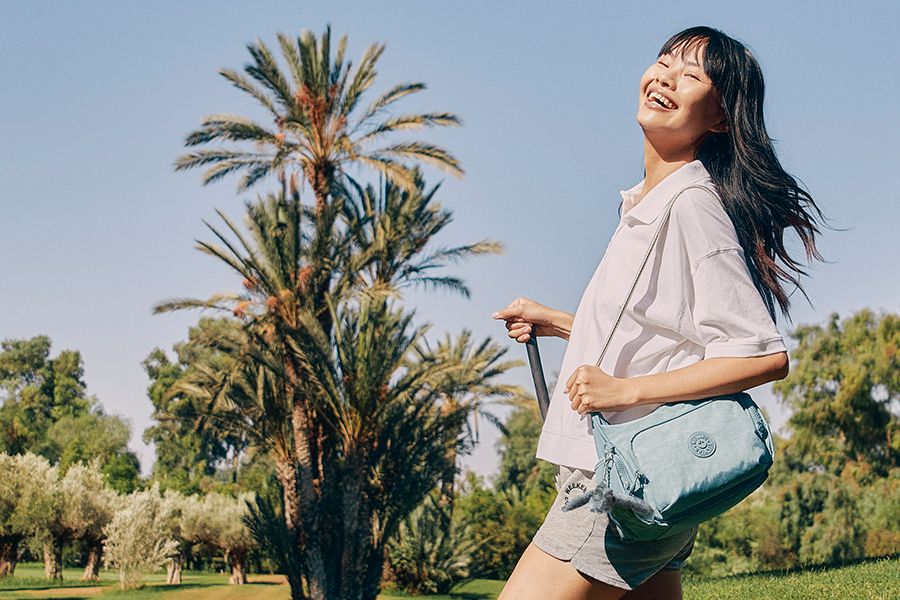What to look for in a fanny pack
A fanny pack, or belt bag, should be slim, durable, and securely worn around the waist. Keep an eye out for key features like pockets and key clasps. Plus, get an adjustable strap to easily fix the fit and style of your gear.
To wear fanny packs well, be sure to choose the look that best suits you before heading out the door. It’s no surprise that fanny packs come in a wide variety of styles, colors, and sizes for any lifestyle. Ask yourself how much you’ll need to carry, whether a water-resistant material is necessary (white-water rafting, anyone?), and what type of storage would work best for your needs.
Use a waist pack for your phone and keys before hitting the trail. Do you prefer a front pocket with some extra space? You might want to consider an extra-large, water-resistant pack that can carry a bit more.
Why are fanny packs called fanny packs?
In America, belt bags or hip packs are called “fanny packs” because they are often worn with the pouch above the backside for hands-free convenience. Derived from the American slang term for “fanny,” the “fanny pack” has become a style icon across the United States.
There’s no clear explanation as to when and why the American alternative to the British moniker “bum bag” came to be. Some people believe the American usage was formally recorded in the early 20th century. Given the practicality of hip-hugging bags, it’s no surprise that this style actually dates back 5,000 years to the Stone Age.
In fact, the legendary mummy Otzi the Iceman was discovered in 1991 by German hikers on the border of Austria and Italy in the Ötztal Alps. The mummy was so well-preserved that a calfskin belt affixed with a buffalo pouch was clearly visible. With the Getty images to prove it, fanny packs were a style statement even for early explorers.
Is it a bum bag or a fanny pack?
Americans tend to call a belt bag a “fanny pack” while the British use the term “bum bag.” In the 1950s, the British trademarked the term “bum-bag” to reference the pouch that skiers would wear on the slopes. The United States soon coined a sportier alternative: the iconic “fanny pack.”
The reason for this, of course, is that “fanny” is the American slang for the backside. The term “fanny” has a different, more vulgar meaning in British English and therefore is rarely used in the United Kingdom or Australia to describe this style. Therefore, “bum bags” are the standard for a British audience.
What do you put in a travel fanny pack?
You should store all of your travel essentials in your fanny pack. Bring tissues, your phone, a small amount of cash just in case, and a spare set of keys. The secret here is to store anything you might need to grab easily on your trip.
But, let’s be real, what you put in a travel fanny pack really depends on which one you buy. For instance, a small waist pack is lightweight and ideal for on-the-go days. But, if you’re looking to carry more than a couple things, the single pocket and U-shaped silhouette might not be big enough for you.
If you need to swipe your subway card or parking permit on the daily, go for an extra-large waist bag with an outer zip compartment. Plus, take advantage of an internal zip compartment to keep your cards and money safe.
Are fanny packs safe for travel?
Fanny packs are safe for travel because they keep your essentials secure and close at hand. Unlike wheeled travel bags or duffle bags, fanny packs can be worn around the front of your body for added security and anti-theft functionality.
But, ok, in some cases, wearing a fanny pack while sightseeing can clearly showcase you as a tourist which can make you susceptible to pickpockets. Be sure to store anything more valuable, like credit cards and passports, in an inner zipped pocket of your waist bag for added security. You might want to leave your passport in the hotel room for safekeeping.
Why are fanny packs coming back?
Fanny packs are making a resurgence or coming back in style because of their practicality and convenience. They don’t put added strain on your neck, and many retailers and designers began introducing a modern version of the ‘90s style staple. When celebrities started wearing them cross-body, the public followed suit.
Shop Kipling for the ultimate fanny packs for school, work, and any other adventure. What are you waiting for? Find the perfect fit today!

